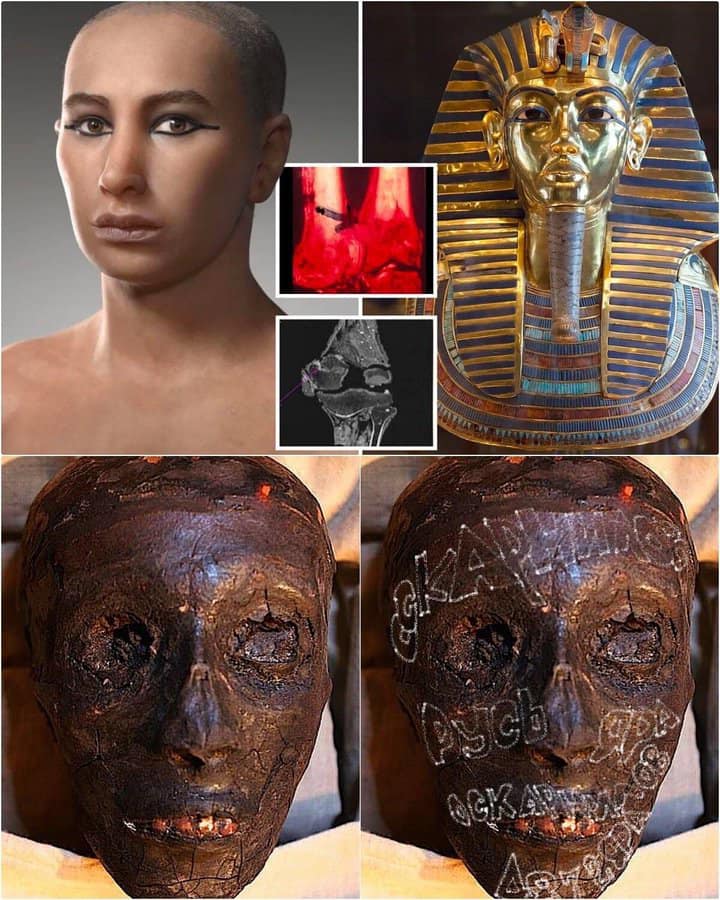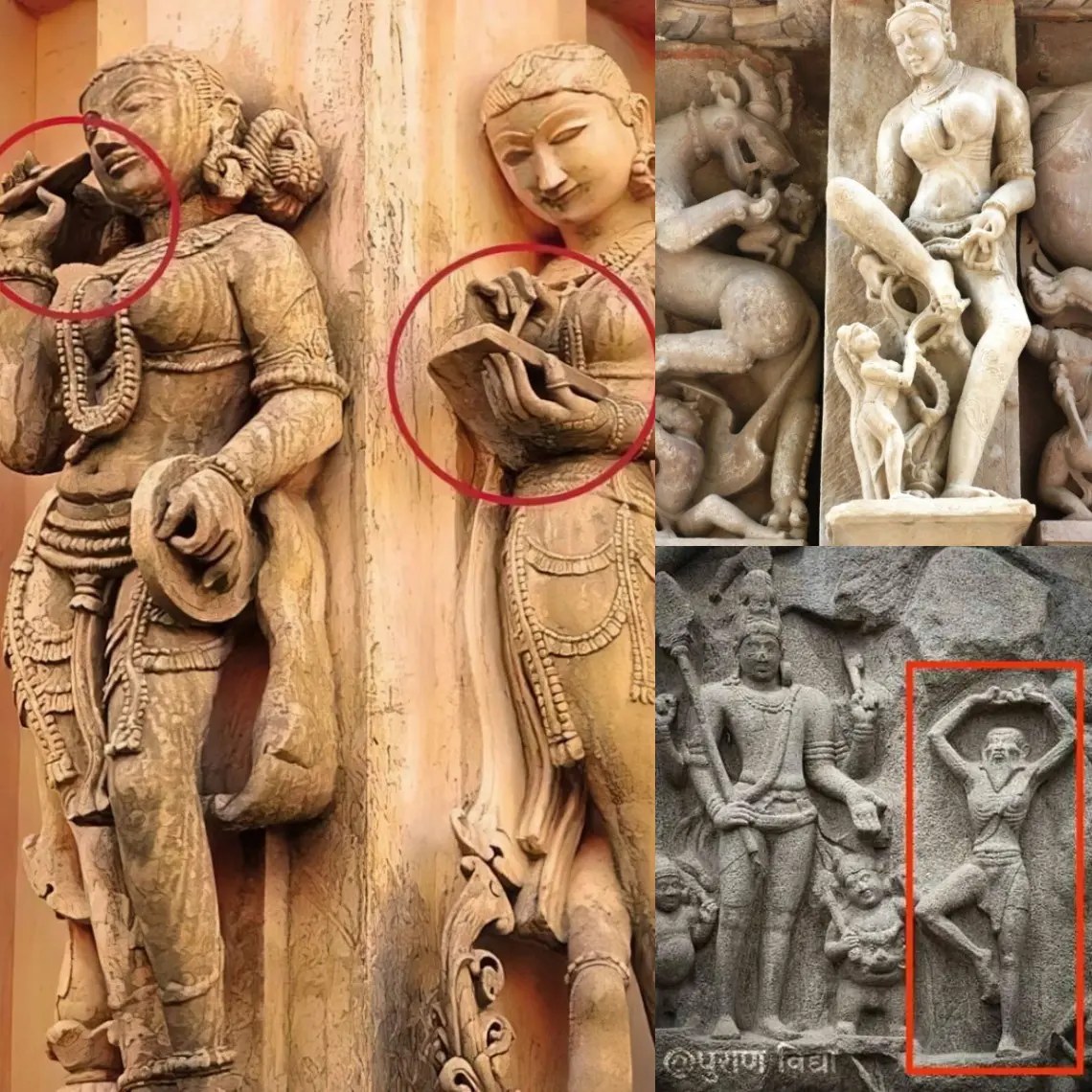From wild animals to divine creatures, cats in ancient Egypt played an important role for thousands of years
The ancient Egyptians’ special love for cats is well known. Admired for her hunting abilities, the sleek feline achieved divine status, becoming a fixture of ancient Egyptian society. Lavish tomb paintings, lofty statues, and intricate jewelry all show the Egyptians’ great fondness for cats. In the land of the Pharaohs, the cats were pampered, respected, and protected. While ritual killings of the sacred felines were allowed, unsanctioned murder would be harshly punished, with the culprit sentenced to death.
For centuries, cats in ancient Egypt maintained their exalted position, recorded by ancient sources in minute detail. Regime changes did not diminish the feline’s position. People in Ptolemaic and Roman Egypt continued to revere the cat. Only with the arrival of Christianity, did the cat lose her preeminent position. But with the arrival of the modern age; the dominance of social networks and high-speed communication has restored their status, making the crafty feline the center of our society once again.
“Domestication” of Cats in Ancient Egypt

While cats in ancient Egypt achieved exalted status, they were not domesticated in the Nile Valley. Instead, the earliest record of the cat’s domestication comes from the Near East, the area known as the Fertile Crescent. It was here that some of the first human civilizations emerged. The First Agricultural Revolution turned hunter-gatherers into farmers, who abandoned their nomadic lifestyle. This change was accompanied by new technologies and the emergence of the first complex societies, as the settlements gradually turned into cities and then into kingdoms and empires. Food surpluses fueled the development of civilization. However, the large granaries and silos, which stored precious food stock, were constantly threatened by a small but persistent enemy — mice, rats, and other pests.
It was here that the cat entered the stage, becoming an inseparable part of human history. Attracted by the rodents, local wildcats slunk into early farming villages. Recognizing their worth, the humans began to treat the newcomers well, leaving the food remains to encourage them to stay. Slowly, the cat became accustomed to humans. Yet, the crafty feline was never to be fully tamed, unlike the other important domestic animal — the dog. Instead, cats in ancient Egypt domesticated themselves, deciding whether to jump into humans’ laps. The earliest evidence of cats and humans living together in close companionship comes from the island of Cyprus, where the archeologists unearthed a 9500-year-old grave of a prehistoric tabby, buried together with her owner. However, the cat reached her highest status beyond the island’s shores, in the land of the Pharaohs — ancient Egypt.

Get the latest articles delivered to your inbox
The cat probably arrived in Egypt on board ancient trading ships around 2,000 BCE. Although according to another theory cats in ancient Egypt were an offshoot of the native African wildcat Felis silvestris lybica, “domesticated” by local farmers. Ancient Egyptian life depended on the flooding of the Nile, which provided the arable land necessary for the growth of civilization. Cats kept the vital crops safe from rodents, becoming an object of admiration.
However, the cats did not just chow down on mice and rats. They also killed snakes (many of them venomous) and scorpions, keeping the people safe. The ancient Egyptians also admired the cat’s other qualities, like the mother’s care for their offspring and their graceful posture. Thus, it is not surprising that the cat’s status only continued to rise as the centuries progressed, with the sleek feline turning into a divine creature.
The Beloved Companions: Domestic Cats
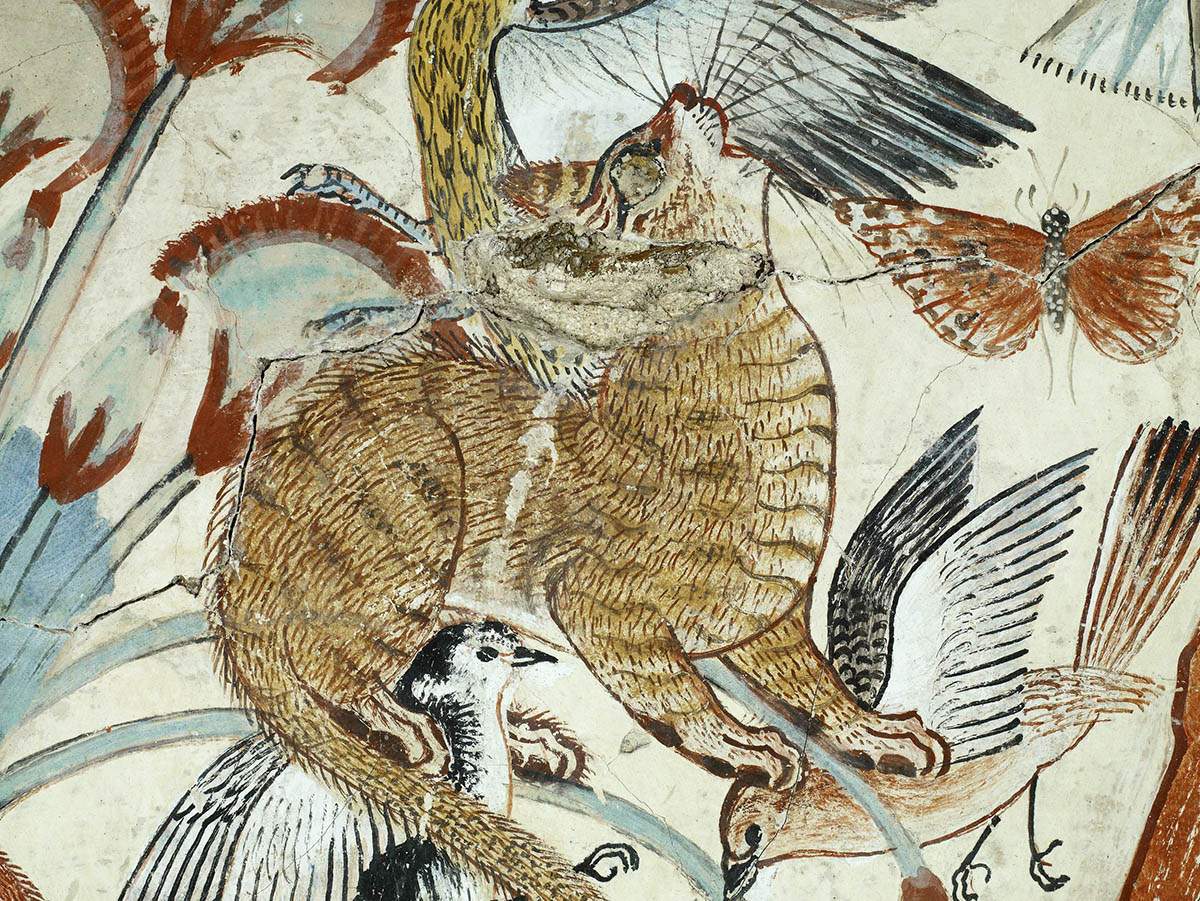
Art offers us the best way to trace the cat’s rise to glory in ancient Egypt. One of the first artistic representations, the fresco found in the tomb of an Egyptian official Baqet III (dated to the 21st century BCE), shows a cat confronting a field rat, proving the animal’s vital role in keeping crops safe. However, from 1450 BCE onward, the cat began to be shown quite frequently in tomb scenes, especially at Thebes, the Egyptian capital during the New Kingdom era. The famous fresco from the Nebamun’s tomb shows a beautifully painted cat attacking birds, accompanying its owner on a fowl hunt. The 3500-year old tabby is depicted in such detail that it could easily be mistaken for a work of the “old masters”.
By this time, the cat became a pampered pet, favored by royalty and noble families. The tomb scenes show this change, shifting from outdoor scenes to more intimate, domestic settings. The cat seated near or under the owner’s chair reminds us of the animal’s newfound role. While it is certain that the cat became an important part of the household, both in an urban and rural setting, representations of the felines can be interpreted differently. We should not forget that ancient Egyptian paintings also had symbolic meanings. For instance, the cat was often depicted under the wife’s chair, symbolizing fertility and femininity, complementing the long-established motif of dogs sitting or lying under the chair of her husband.
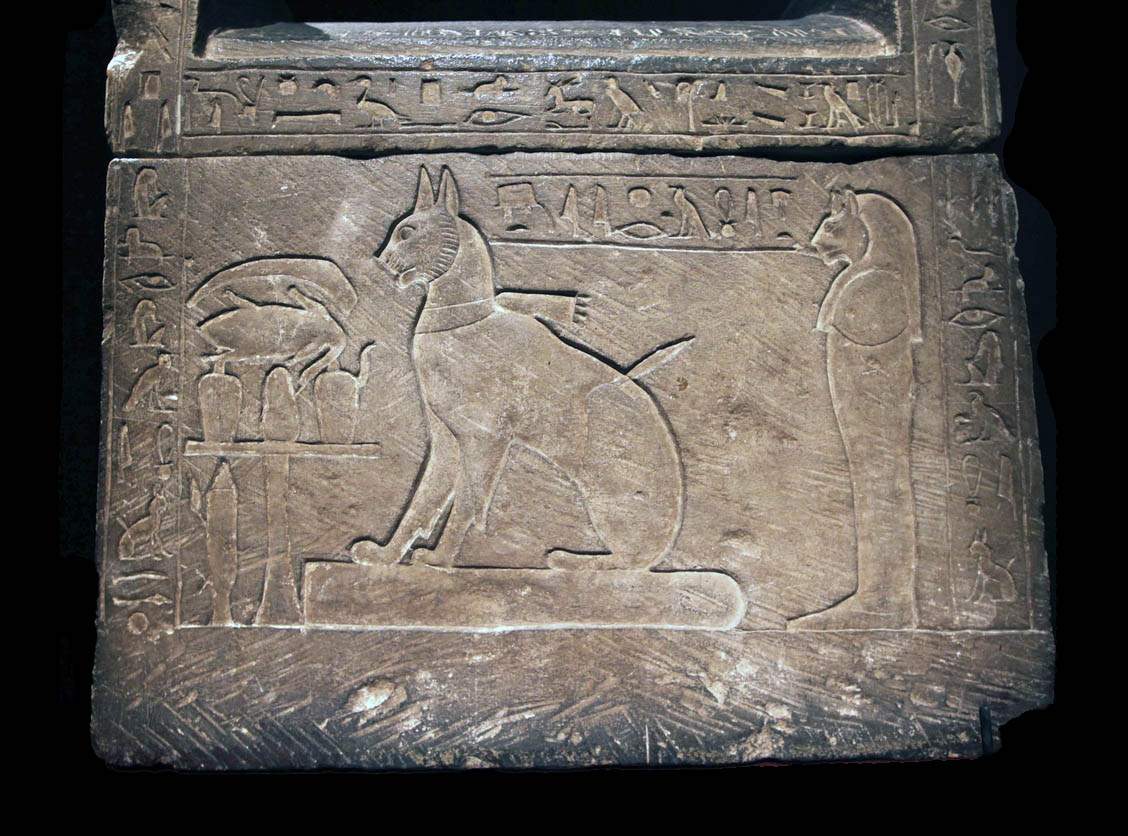
The best evidence for the strong bond between felines and their human is reflected in one of the first recorded cat sarcophagi. The best-known of these pet coffins belonged to a royal pet. Around 1350 BCE, Prince Thutmose, the eldest son of pharaoh Amenhotep III, buried his dearest feline in a beautifully decorated limestone sarcophagus. Ta-Miu (whose name means “The female cat”) is depicted like any other respectable deceased nobleman, with a sacrificial table in front of her, filled with meat and other sacrifices (!). Thutmose did all he could to assure that Ta-Miu would have a dignified afterlife. The sarcophagus inscription proudly proclaims: “I myself am placed among the imperishable ones that are in the Sky / For I am Ta-Miu, the Triumphant.” The tomb scenes further confirm the cat’s lofty status in noble households, showing cats dressed in gold and eating from their owner’s plates.
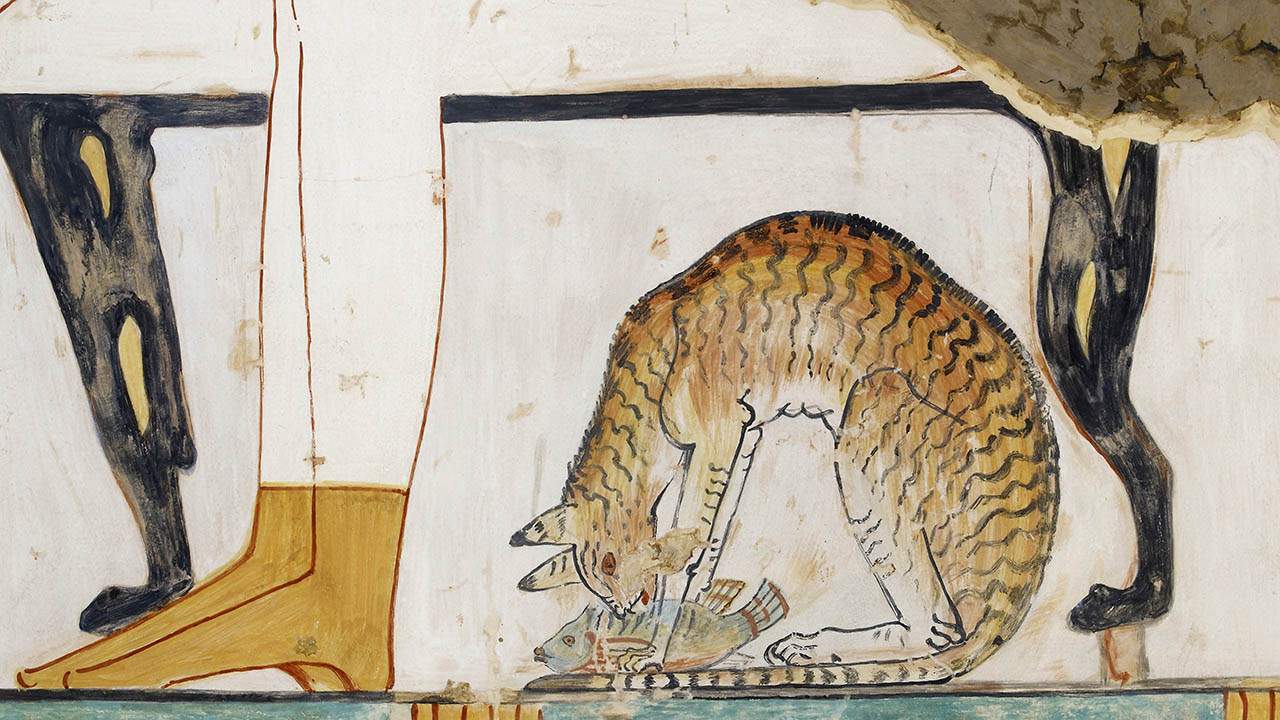
Interestingly, while there was more than one cat in ancient Egypt, the Egyptians only had a single word for a feline, the onomatopoeic “miu” or “miit”, meaning literally “he or she who mews.” Some people were even named after cats, including the Pharaoh Pami whose name means “Tomcat” or “he who belongs to the Cat (Bastet).” Perhaps this infatuation with cats can explain how the Egyptians turned their own cats into the lovable fur-balls we know today. It is even possible that they domesticated cats a second time, modifying their diet and selectively breeding them. Yet, while cats in ancient Egypt had achieved the status of a privileged pet, their religious role made this miniature lion a central element of ancient Egyptian society.
Divine Creatures: Vessels of Gods and Bastet

While cats in ancient Egypt played a crucial role in Egyptian religion, it would be a mistake to imagine that the Egyptians worshipped cats. Instead, the Egyptians considered cats (and other animals) as vessels the gods chose to adopt. Cats were respected for being fierce hunters and protectors of their homes and young. They could be sweet at times, warrior-like at others. All those qualities, the cat shared with its larger cousin, the lion. Thus, it is not surprising that one of the first Egyptian feline deities, Sekhmet — the warrior goddess and protector of the pharaohs (both in life and the afterlife) — sported the head of a lioness.
According to the Egyptian creation myth, Sekhmet was the daughter of the sun god Amun Ra, who sent the lion-headed goddess to punish humans for their crimes. However, Sekhmet did her mission with such gusto that Ra had to appease his vengeful offspring, getting her drunk with red beer, which resembled blood. Satisfied at last, Sekhmet curled up and fell asleep, the angry lioness becoming a peaceful kitten. Indeed, while known as a ferocious deity, Sekhmet was also a stalwart protector of the innocent. Yet, the most famous Egyptian feline goddess was Bastet, who had a special connection with cats.

Bastet, too, initially had a lioness’ head and was at first associated with Sekhmet. However, as cats were domesticated and introduced into a domestic setting, Bastet gained a cat’s head, eventually becoming an actual cat. As an important member of the Egyptian pantheon, Bastet was revered as a goddess of motherhood, fertility, and the household. Just like the mother cat who keeps her kittens safe, Bastet was considered a family protector. She kept a household safe from evil spirits and disease, especially diseases affecting women and children, and was a deity invoked during childbirth. In addition, Bastet played a role in one’s afterlife.
Ancient Egyptians would wear cat amulets to invoke Bastet’s protection and blessing. Countless cat sculptures were made in her honor and given as votive offerings in the hope that the deity would answer prayers, or else they were given as a form of gratitude for prayers answered. One such statue, the so-called Gayer-Anderson’s cat, a masterpiece of feline elegance, can nowadays be seen in the British Museum. The cat’s head, decorated with golden earrings and a nose ring, evokes the ancient felines, wearing lavish jewelry made of gold and other precious metals.
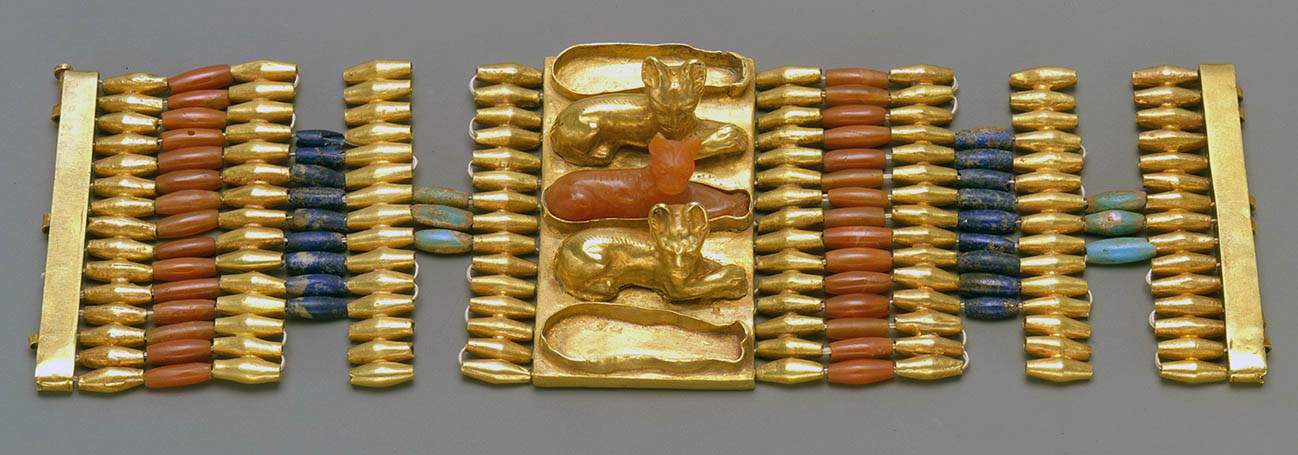
Temples dedicated to Bastet were located all over Egypt, and housed and cared for hundreds of cats. The largest of them, the temple of Bubastis (“House of Bastet”), located on the Nile delta, was the center of the Bastet cult. From the New Kingdom onwards, the city of Bubastis grew in popularity, turning the temple into one of the most important sacred sites in Egypt. Around 450 BCE Herodotus described the ritual to Bastet, with hundreds of thousands of pilgrims drinking copious amounts of wine in honor of the goddess, dancing and celebrating in ecstasy. The orgiastic nature of the yearly festival in Bubastis probably reflected the cats’ fertility and their specific behavior during the mating season. Once again, the ancient Egyptians had shown respect to the cat goddess by emulating the sacred felines.
Yet, like every cat, Bastet had her darker, more violent side. The goddess could quickly turn into a terrifying creature, punishing the offender in the most horrible way. One of the worst ways to offend the goddess was to harm one of her cats. Unfortunately, one Roman envoy, who visited Egypt in 59 BCE, did not take this seriously. He committed the most heinous crime. He killed a cat. Was this a stray or a feline from the temple? We do not know. However, we know of the offender’s fate. According to Diodorus Siculus, a mob of angry Egyptians soon congregated together, united by their passionate urge to avenge the slain feline. Even the pharaoh could not save the unfortunate man from the death sentence.
A Gift to the Goddess: Cat Mummies

While unsanctioned cat killing was prohibited, thousands of felines were ritually killed in one of Bastet’s many temples. Large catteries located on the temple grounds specially bred the animals to be used as offerings. The sacrificed cats in ancient Egypt would then be mummified and buried in the nearby cemeteries devoted to the goddess. The cat cemeteries grew to such a level that 19th-century excavations turned up countless cat mummies. Many of the mummies were carefully wrapped, with ornamental head coverings. Others were encased in specially made cat statues or decorated sarcophagi, like Thutmose’s beloved Ta-Miu. These findings were so common that the British began to export the cat mummies to England to use as fertilizer — once bringing over 180,000 in a single shipment (!).
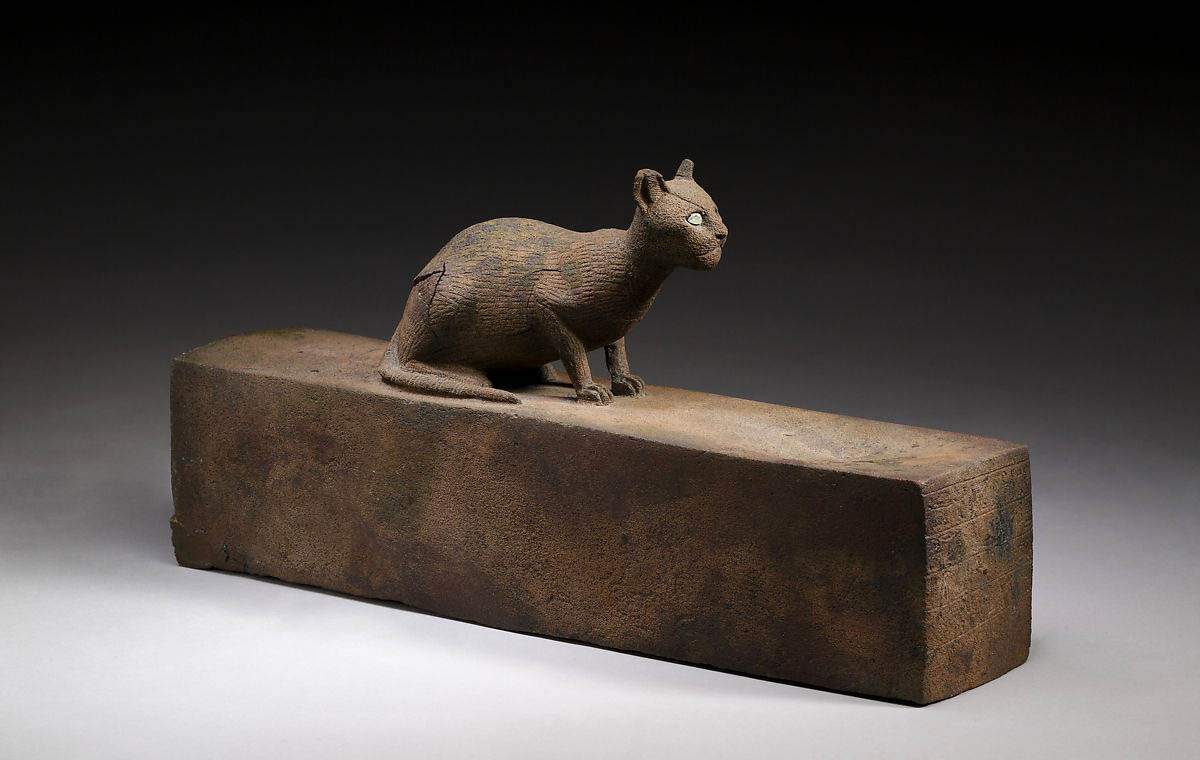
Not all cats suffered a violent fate before their mummification. In ancient Egypt, many cats were buried with their humans. According to the “Book of the Dead”, the owners believed they would be reunited with their faithful protectors in the afterlife. Others buried their beloved companions in dedicated pet cemeteries, where archeologists have found the remains of well-cared-for cats that had often died of old age.
Herodotus recorded the sorrow caused by the loss of a favorite pet. After a cat died a natural death, all the household members would shave their eyebrows as a sign of grief. Another report tells us of Egyptians caught in a burning building who saved their cats before saving themselves or attempting to put out the fire.
Cats in Ancient Egypt After the Pharaohs

Ancient Egyptian devotion to the cat was so great that the fondness for the felines led to their demise. In 525 BCE, the Persian king Cambyses II attacked Egypt. To take the fortified city of Pelusium — a key position on the Nile Delta — the shrewd ruler decided to exploit the enemy’s greatest weakness. The Persians rounded up various animals, including cats, in front of their battle line and painted cats on their shields. The Egyptian soldiers, afraid to hurt the sacred felines (and incur the wrath of Bastet), offered little resistance, allowing the Persians to take Pelusium.
This fascinating tale is probably just a legend. Yet, following the victory at Pelusium, the Persians took hold of all of Egypt. While the Egyptians reasserted their control a century later, their power continued to decline. Only with the arrival of Alexander the Great and the foundation of Alexandria, did Egypt again become a great power. The Ptolemies ruled as the pharaohs of old had and they continued to follow ancient Egyptian customs. The cult of Bastet reached peak popularity under the Ptolemies, with Greek settlers joining the natives in the adoration of sacred felines. Even the Romans, who occupied and annexed Egypt in 30 BCE, continued to revere the miniature lions. Only the arrival of Christianity, and its establishment as the main religion across the whole Roman Empire, in the fourth century CE, brought the ancient tradition to an end. Deprived of their lofty status, cats in ancient Egypt were once again humble domestic animals — protecting humans from various pests.

In the following centuries, the sleek and crafty felines gradually conquered the entire world, reaching even the barren shores of Antarctica. Then, they left Earth’s orbit, venturing into space. With the arrival of modern technologies and high-speed communication, cats have taken control of the internet, becoming the protagonists of countless memes, Instagram photos, and YouTube videos. Perhaps cats in ancient Egypt lost their sacred status. But something tells me that the cat’s ancient Egyptian ancestors would be proud to see their modern cousins’ achievements.
